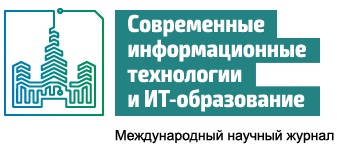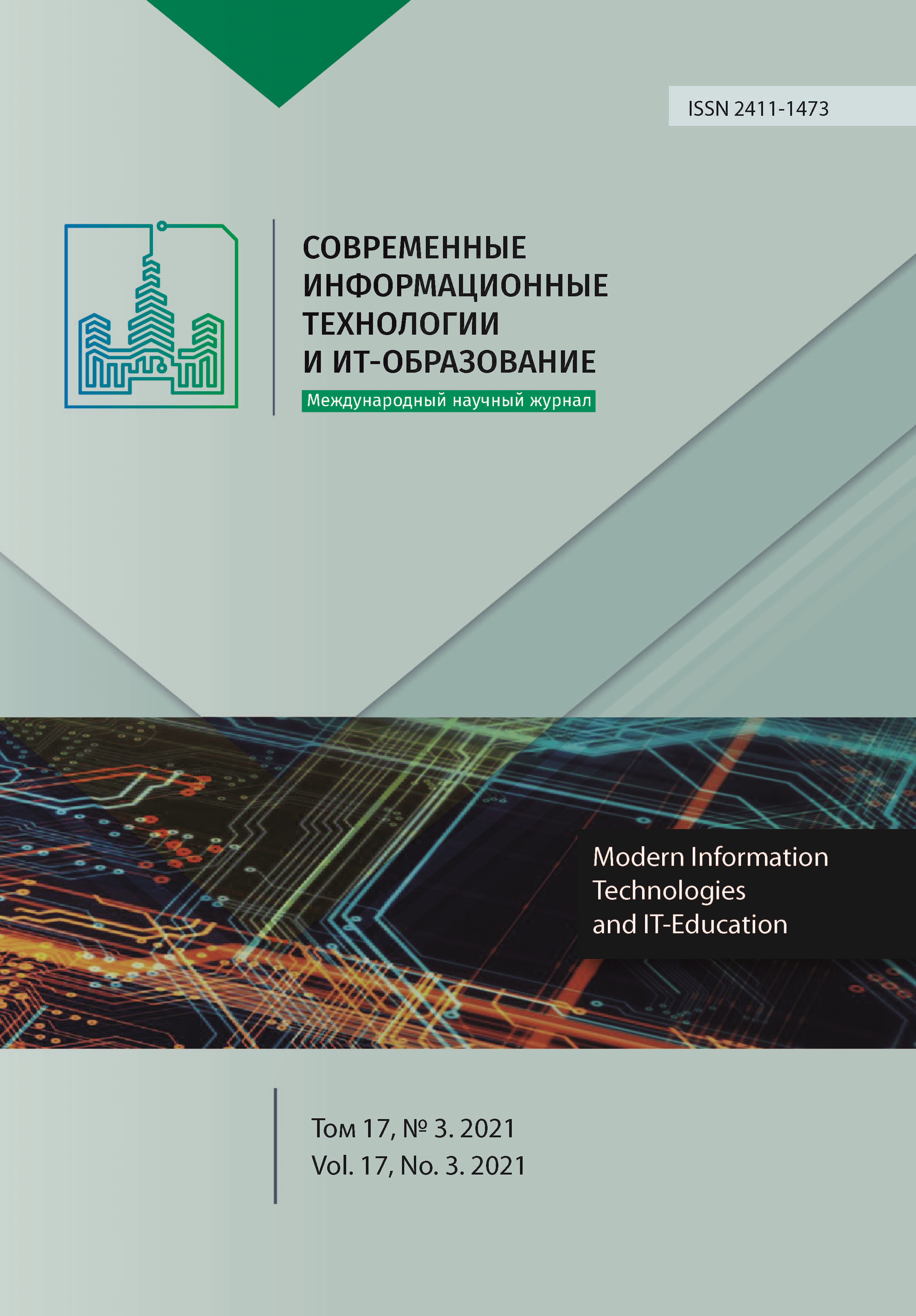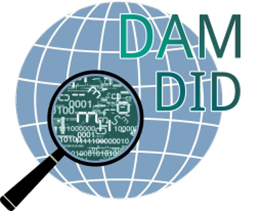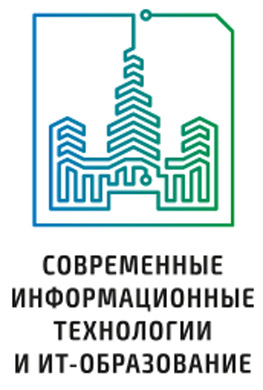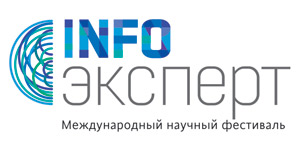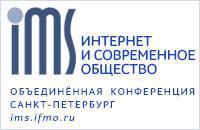Оценка баланса учебных планов при подготовке специалистов в области информационных технологий с применением метода UGVA
Аннотация
В данной статье поднимается вопрос о необходимости иметь методологический подход к сравнению, оценке и актуализации учебных планов при подготовке специалистов в области информационных технологий. В качестве объекта выбрана специальность «Информатика и вычислительная техника», преподаваемая в университетах Российской Федерации. Сведены данные и проанализированы 73 учебных плана. В качестве подхода по концентрации данных и визуализации выбран метод Unified Graphic Visualization of Activity (UGVA). Предложена модель балансировки нагрузки в структуре учебного плана рассматриваемой специальности. На графических образах учебных планах выявлены особенности подготовки студентов и лучшие практики. Для программ подготовки оценен баланс и рассмотрены проблемные аспекты. В частности, было показано, что почти все программы подготовки имеют недостаточный объем учебной нагрузки по направлению общей и фундаментальной информатике, а также недостаточно плотно сотрудничают с региональными отраслевыми партнерами. Опираясь на сравнение выбранного учебного плана с другими, представленными в виде образов в нотации UGVA, предложен ряд рекомендаций, относящийся к изменению структуры вклада дисциплин, развивающих ключевые профессиональные умения.
Литература
2. Ajanovski V. Evolutionary Curriculum Reconstruction: Process Model and Information System Development. Proceedings of the 18th Annual Conference on Information Technology Education. Association for Computing Machinery, New York, NY, USA; 2017. p. 89-94. (In Eng.) DOI: https://doi.org/10.1145/3125659.3125698
3. Tosic P., Beeston J. Designing Undergraduate Data Science Curricula: A Computer Science Perspective. 2018 ASEE Annual Conference & Exposition. ASEE Conferences, Salt Lake City, Utah; 2018. p. 1-11. (In Eng.) DOI: https://doi.org/10.18260/1-2--30283
4. Aldowah H., Al-Samarraie H., Fauzy W. Educational data mining and learning analytics for 21st century higher education: A review and synthesis. Telematics and Informatics. 2019; 37:13-49. (In Eng.) DOI: https://doi.org/10.1016/j.tele.2019.01.007
5. Zykina A.V., Kaneva O.N., Munko V.V. The development of approaches for obtaining automated solution on the formation of the curriculum. Sovremennye informacionnye tehnologii i IT-obrazovanie = Modern Information Technologies and IT-Education. 2018; 14(4):931-937. (In Eng.) DOI: https://doi.org/10.25559/SITITO.14.201804.931-937
6. Takada S., Cuadros-Vargas E., Impagliazzo J., Gordon S., Marshall L., Topi H., Veer G., Waguespack l. Toward the visual understanding of computing curricula. Education and Information Technologies. 2020; 25(5):4231-4270. (In Eng.) DOI: https://doi.org/10.1007/s10639-020-10127-1
7. Waguespack L., Topi H., Frezza S., Babb J., Marshall L., Takada S., van der Veer G., Pears A. Adopting Competency Mindful of Professionalism in Baccalaureate Computing Curricula. In: Ed. by J. Sharp. Proceedings of the EDSIG Conference on Information Systems and Computing Education. ISCAP, Cleveland, Ohio; 2019. Article number: n4955. 17 p. Available at: http://proc.iscap.info/2019/pdf/4955.pdf (accessed 17.08.2021). (In Eng.)
8. Crawley E.F., Malmqvist J., Östlund S., Brodeur D.R., Edström K. Rethinking Engineering Education. The CDIO approach. Springer, Cham; 2014. 311 p. (In Eng.) DOI: https://doi.org/10.1007/978-3-319-05561-9
9. Qi W. Learning Cell: Intelligent Technologies and Resources in Curriculum Development. In: Ed. by S. Yu, M. Ally, A. Tsinakos. Emerging Technologies and Pedagogies in the Curriculum. Bridging Human and Machine: Future Education with Intelligence. Springer, Singapore; 2020. p. 199-214. (In Eng.) DOI: https://doi.org/10.1007/978-981-15-0618-5_12
10. Sozykin A., Koshelev A., Bersenev A., Shadrin D., Aksenov A. Kuklin E. Developing Educational Programs Using Russian IT Job Market Analysis. 2021 Ural Symposium on Biomedical Engineering, Radioelectronics and Information Technology (USBEREIT). IEEE Press, Yekaterinburg, Russia; 2021. p. 0391-0394. (In Eng.) DOI: https://doi.org/10.1109/USBEREIT51232.2021.9454998
11. Han J., Kamber M., Pei J. Data Mining: Concepts and Techniques. The Morgan Kaufmann Series in Data Management Systems. Third edition. Morgan Kaufmann, Elsevier; 2011. 560 p. (In Eng.) DOI: https://doi.org/10.1016/C2009-0-61819-5
12. Gorban A., Zinovyev A. Fast and user-friendly non-linear principal manifold learning by method of elastic maps. IEEE International Conference on Data Science and Advanced Analytics (DSAA). IEEE Press, Paris, France; 2015. p. 1-9. (In Eng.) DOI: https://doi.org/10.1109/DSAA.2015.7344818
13. Chernoff H. The Use of Faces to Represent Points in K-Dimensional Space Graphically. Journal of the American Statistical Association. 1973; 68(342):361-368. (In Eng.) DOI: https://doi.org/10.1080/01621459.1973.10482434
14. Flury B., Riedwyl H. Graphical Representation of Multivariate Data by Means of Asymmetrical Faces. Journal of the American Statistical Association. 1981; 76(376):757-765. (In Eng.) DOI: https://doi.org/10.1080/01621459.1981.10477718
15. Hauthal E., Burghardt D. Retrieving, analyzing and visualizing emotion-related spatial information from user-generated content. KN ‒ Journal of Cartography and Geographic Information. 2015; 65(4):216-229. (In Eng.) DOI: https://doi.org/10.1007/BF03545144
16. Colasanti R., Borgo R., Jones M. Emoji and Chernoff – a Fine Balancing Act or are we Biased? 2019 IEEE Pacific Visualization Symposium (PacificVis). IEEE Press, Bangkok, Thailand; 2019. p. 102-111. (In Eng.) DOI: https://doi.org/10.1109/PacificVis.2019.00020
17. Cene E., Parim C., Özkan B. Comparing the performance of basketball players with decision trees and TOPSIS. Data Science and Applications. 2018; 1(1):21-28. Available at: http://jdatasci.com/index.php/jdatasci/article/view/3 (accessed 17.08.2021). (In Eng.)
18. Padilla L.M., Creem-Regehr S.H., Hegarty M., Stefanucci J.K. Decision making with visualizations: a cognitive framework across disciplines. Cognitive Research: Principles and Implications. 2018; 3:29. (In Eng.) DOI: https://doi.org/10.1186/s41235-018-0120-9
19. Sucontphunt T., Neumann U. 3D Facial Surface and Texture Synthesis Using 2D Landmarks from a Single Face Sketch. 2012 Second International Conference on 3D Imaging, Modeling, Processing, Visualization & Transmission. IEEE Press, Zurich, Switzerland; 2012. p. 152-159. (In Eng.) DOI: https://doi.org/10.1109/3DIMPVT.2012.65
20. Kukharev G.A., Shchegoleva N.L. Algorithms of Two-Dimensional Projection of Digital Images in Eigensubspace: History of Development, Implementation and Application. Pattern Recognition and Image Analysis volume. 2018; 28(2):185-206. (In Eng.) DOI: https://doi.org/10.1134/S1054661818020116
21. Kukharev G., Kaziyeva N. Digital Facial Anthropometry: Application and Implementation. Pattern Recognition and Image Analysis. 2020; 30(3):496-511. (In Eng.) DOI: https://doi.org/10.1134/S1054661820030141
22. Gupta S., Markey M.K., Bovik A.C. Anthropometric 3D face recognition. International Journal of Computer Vision. 2010; 90(3):331-349. (In Eng.) DOI: https://doi.org/10.1007/s11263-010-0360-8
23. Kossiakoff A., Sweet W.N., Seymour S.J., Biemer S.M. Systems Engineering Principles and Practice. 2nd ed. John Wiley & Sons, Inc.; 2011. 560 p. (In Eng.) DOI: https://doi.org/10.1002/9781118001028
24. Uglev V., Sychev O. Concentrating Competency Profile Data into Cognitive Map of Knowledge Diagnosis. In: Ed. by A. Basu, G. Stapleton, S. Linker, C. Legg, E. Manalo, P. Viana. Diagrammatic Representation and Inference. Diagrams 2021. Lecture Notes in Computer Science. 2021; 12909:443-446. Springer, Cham. (In Eng.) DOI: https://doi.org/10.1007/978-3-030-86062-2_46
25. Uglev V., Ustinov V. The New Competencies Development Level Expertise Method within Intelligent Automated Educational Systems. In: J. B. Perez, J. M. Corchado Rodríguez, et al. Trends in Practical Applications of Heterogeneous Multi-Agent Systems. The PAAMS Collection. Advances in Intelligent Systems and Computing. 2014; 293:157-164. Springer, Cham. (In Eng.) DOI: https://doi.org/10.1007/978-3-319-07476-4_19

Это произведение доступно по лицензии Creative Commons «Attribution» («Атрибуция») 4.0 Всемирная.
Редакционная политика журнала основывается на традиционных этических принципах российской научной периодики и строится с учетом этических норм работы редакторов и издателей, закрепленных в Кодексе поведения и руководящих принципах наилучшей практики для редактора журнала (Code of Conduct and Best Practice Guidelines for Journal Editors) и Кодексе поведения для издателя журнала (Code of Conduct for Journal Publishers), разработанных Комитетом по публикационной этике - Committee on Publication Ethics (COPE). В процессе издательской деятельности редколлегия журнала руководствуется международными правилами охраны авторского права, нормами действующего законодательства РФ, международными издательскими стандартами и обязательной ссылке на первоисточник.
Журнал позволяет авторам сохранять авторское право без ограничений. Журнал позволяет авторам сохранить права на публикацию без ограничений.
Издательская политика в области авторского права и архивирования определяются «зеленым цветом» в базе данных SHERPA/RoMEO.
Все статьи распространяются на условиях лицензии Creative Commons «Attribution» («Атрибуция») 4.0 Всемирная, которая позволяет другим использовать, распространять, дополнять эту работу с обязательной ссылкой на оригинальную работу и публикацию в этом журналe.
